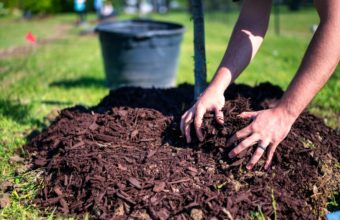Arborists use various methods to measure trees accurately.
Here are some common techniques they employ…
- Diameter at Breast Height (DBH) – This is one of the most common and widely used methods for measuring tree size. Arborists measure the diameter of the tree trunk at breast height, which is typically 4.5 feet (1.37 meters) above the ground. They use a measuring tape or a specialized tool called a DBH tape to take this measurement.
- Circumference – In some cases, arborists may measure the circumference of a tree trunk at breast height using a flexible measuring tape. This measurement can be used to estimate the tree’s diameter and overall size.
- Height – Arborists use various techniques to measure the height of a tree. These methods may include using a clinometer to measure angles and distances, using a laser rangefinder or hypsometer to measure height directly, or using trigonometric calculations based on known distances and angles.
- Crown Spread – Arborists may measure the spread or width of a tree’s canopy, also known as the crown spread. This measurement can be useful for assessing the overall size and health of the tree, as well as for determining its potential impact on nearby structures or vegetation.
- Root Spread – While it’s more challenging to measure accurately, arborists may also estimate the spread of a tree’s root system. This information can be valuable for assessing potential root damage to infrastructure or for planning tree planting and landscaping projects.
- Volume – In some cases, arborists may need to estimate the volume of wood in a tree for purposes such as timber harvesting, biomass calculations, or carbon sequestration assessments. Various mathematical formulas and techniques can be used to estimate tree volume based on measurements of diameter, height, and shape.
Overall, accurate measurement of trees is for arborists to assess their health, size, growth rate, and structural integrity, as well as to make informed decisions about tree care, maintenance, and management.






